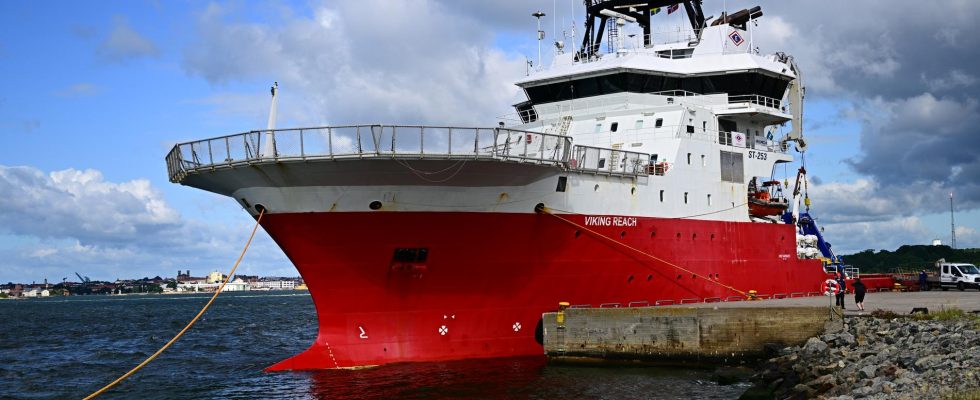1 / 3Photo: Magnus Lejhall/TT
There are unanswered questions surrounding the sinking of the Estonia – a disaster that claimed 852 lives. The accident commission believes that the answers are to be found 80 meters below the surface at the wreck, which is now to be investigated again.
– We want to answer as many questions as we can, says inquiry chairman Jonas Bäckstrand.
Late on Wednesday evening, the Norwegian ship Viking Reach reaches the accident site, where the MS Estonia sank in 1994. For about a week, the National Accident Commission, together with the corresponding authorities from Estonia and Finland, will dive down to the wreck to try to clear up questions about the sinking.
With the help of remote-controlled underwater robots, the inside of the car tire must be photographed.
– The ramp has detached from the ship so it is now possible to gain access to the cargo space. We want to document as much as possible there, says Jonas Bäckstrand, chairman of the National Accident Commission’s investigation.
Follows flows
Among other things, it will be investigated which possible paths the water may have taken after rushing onto the car tyre. This should be done by photographing doors, ventilation systems and hatches to see if they have any damage.
– There is information and reasoning about water having penetrated under car tires and therefore it is interesting for us to follow how the water may have flowed.
One question they hope to be able to answer is the sinking’s rapid sequence of events. The car ramp can become an important part of putting the puzzle together.
According to the conclusions of the previous international commission of inquiry presented in 1997, the ship’s bow visor was torn loose in the rough sea. When the visor fell off, the car ramp was also pulled along, which led to large amounts of water flowing onto the car tires.
The ramp, which has detached from the vessel, will be salvaged and transported to Estonia for further examination.
– The fact that the ship lost the bow visor is not what should lead to a sinking, but it is the ramp that is supposed to protect the ship against water ingress. It is essential to the sequence of events and that is why we want to pick it up to understand it better, says Bäckstrand.
New investigations
The decision to conduct new investigations at Estonia is based on a documentary film from 2020 where previously unknown holes in the hull were shown and theories about how they arose were presented.
Estonia’s accident authority decided to open a new investigation to review the data. The National Accident Commission and the Finnish Accident Investigation Center were asked to participate in the investigation work. In the summer of 2021 and 2022, the outside of the ship was photographed and samples were taken from the bottom.
During the week, the investigators will also take samples of coatings near the holes that were shown in the documentary film. Theories have been raised that the darker areas near the holes could be due to explosions, but according to Jonas Bäckstrand, it is most likely bacteria feeding on rust.
“Reverence”
Bäckstrand says that it is exciting to be able to examine the wreck with better cameras and modern methods. At the same time, the authorities are trying to respect the remains of the 700 dead who remain in Estonia.
– We don’t expect to see bodies, but it is clear that there may be people on car tires. There is information that some could have spent the night in their vehicles, says Bäckstrand.
– You are very well aware that it is a burial site with more than 700 people who are still down there. You feel a certain reverence for it.
Diving carried out by authorities in order to investigate the accident does not run the risk of violating the statutory burial peace around Estonia.
The accident commission hopes to be able to publish results during the autumn.
FACTS The Estonia disaster
The ferry Estonia sank on 27 September 1994 en route from Tallinn to Stockholm.
852 people died, of which 501 were Swedes. 137 people were rescued.
The international accident commission’s most important conclusion was that the fasteners and locks for Estonia’s bow visor were undersized. When the bow visor came off, large amounts of water gushed onto the car deck and caused the vessel to capsize. However, survivors, relatives and other involved people have demanded that the rapid course of the ship’s sinking must be investigated further.
Read more
